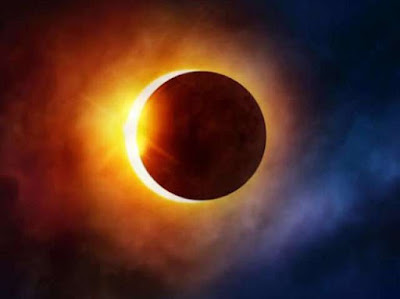Partial Lunar Eclipse on January 6: Understanding 'Super Blood Wolf Moon' Occurring this Month
Partial Lunar Eclipse on January 6: Understanding 'Super Blood Wolf Moon' Occurring this Month
In a spectacular celestial show, the sky this month will witness a total lunar eclipse, a meteor shower and a partial solar eclipse and the first of this year's sky show is a partial solar eclipse, which will occur on January 6.
The stage is set for stargazers around the world, as January 2019 is going to be an extraordinary month on the astronomical calendar.
In a spectacular celestial show, the sky this month will witness a total lunar eclipse, a meteor shower and a partial solar eclipse.
The first of this year's sky show is a partial solar eclipse, which will occur on January 6. The eclipse will be partial as the alignment between the Sun and the Moon will not be very exact, and as a result the Moon will not cover the Sun completely.
Starting at around 5 am in the morning and lasting till 9 am the eclipse will be visible in parts of North-East Asia and the Pacific Ocean including China, part of Siberia in Russia, Korean peninsula, and Japan. But, it won't be visible in India.
However, the most awaited show still, will occur on January 20 and 21 with a trifecta of lunar activities -- a total lunar eclipse, a super blood moon and a wolf moon. The result? A 'Super Blood Wolf Moon.'
A lunar eclipse occurs when the Moon passes through the Earth's shadow, just as a solar eclipse occurs when part of the Earth passes through the Moon's shadow. However, a total lunar eclipse occurs when the moon and sun are on opposite sides of Earth.
And stargazer or not, be sure not to miss it because this is going to be the last total lunar eclipse until May 26, 2021. Let’s look at these phenomenon in a little detail:
'Super Blood Wolf Moon'
Blood moon: When the moon, Earth, and sun perfectly align -- due to which the whole of the moon’s surface is shielded from the sun's rays -- wayward beams of sunlight filter through Earth's atmosphere. The moon at this time looks fiery red and this is a total eclipse.
Because the moon acquires a deep reddish tint in varying degrees of shades, it is known as the ‘Blood Moon.’ The moon appears to be redder if the amount of dusk and clouds in the earth’s atmosphere is more.
Supermoon: While full moons can occur at any point along the Moon's elliptical path, it’s when a full moon occurs at or near the perigee (closest distance to Earth), it looks slightly larger and brighter than a typical full moon. This is called a supermoon.
According to NASA, during a supermoon, the brightness of the moon can increase up to 30 percent.
Wolf moon: The full moon phenomenon in January has long been known as the "Wolf Moon". It was named so by Native Americans and medieval Europeans, based on the howling hungry wolves lamenting the midwinter dearth of food.
And this trifecta event of January is collectively known as the 'Super Blood Wolf Moon'.
When And Where
According to a National Geographic report, the total lunar eclipse will begin at 10:11am IST on January 21 and will last for 62 minutes. Most people in Asia, including India, will miss the complete eclipse, while people in eastern Africa and eastern Europe will be able to see the partial lunar eclipse. The 3.5-hour event will be visible from the US, Greenland, Iceland, Western Europe, and western Africa.
How To Watch
Simply go out and look up if this month's lunar eclipse is visible in your area. What this essentially means is that you will not need any special equipment or telescopes.

















No comments